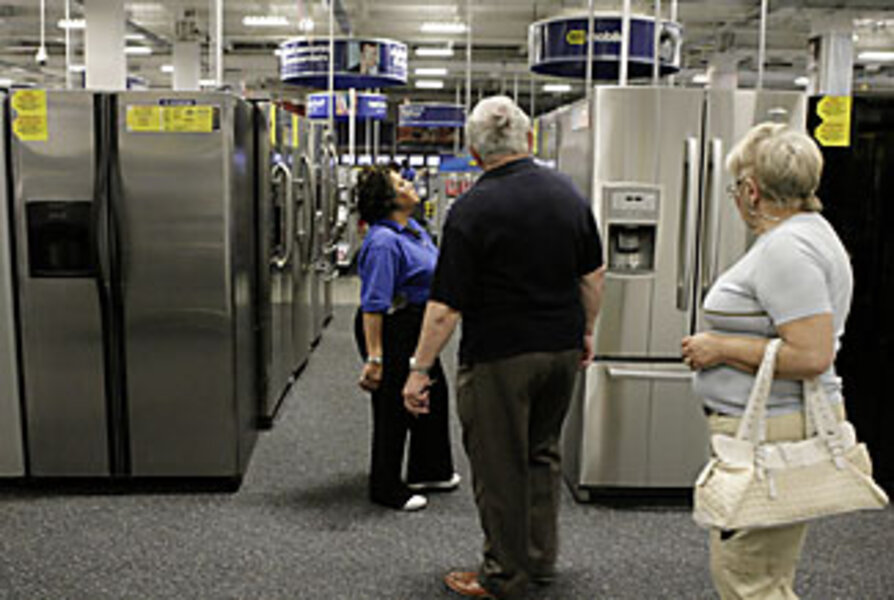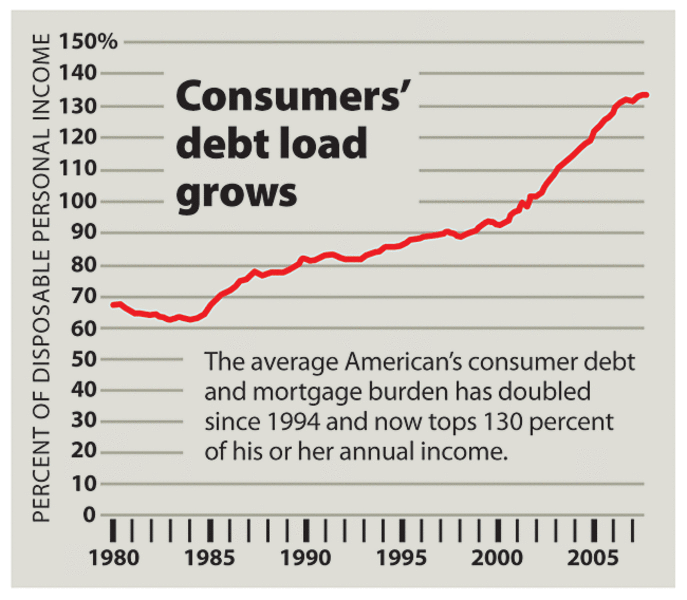Money pressures pile up on the U.S. consumer
Loading...
The price of oil ranks at the top of Americans' economic concerns right now, but it's not the only reason consumers feel squeezed.
Boston resident Toni Carter doesn't drive to work but has a handful of challenges on her mind:
•Slim pay raises.
•Replacing her part-time job with a full-time one.
•Paying down the debts she and her husband owe – including one for oil.
"We still owe a bill from the winter," she says. "The oil company allowed us to go on a payment plan. I expect that we'll pay our winter heating bill all through the summer."
Ms. Carter isn't sure if they can afford a driving trip to visit in-laws in upstate New York this summer.
Yet, as American households go, they're not in particularly bad shape. As renters, for example, they don't have a big home loan. Millions of Americans are feeling more bank-account stress.
Rising consumer prices and the sliding value of houses have ratcheted up the pressure in the past year or more. The current economic slowdown is also exacerbating longer-term trends, such as rising debt levels, lean income gains, and the fact that many are underemployed – working less than they'd like.
For example, as a record number of homes go into foreclosure, the banking system is also under strain. That pressures banks to raise interest rates on credit cards just when many consumers would most like to use them.
Meanwhile, the labor market is cooling – making it tougher to win pay raises or to find new jobs.
These challenges are not confined to any one region of the country. But in Boston, as elsewhere, it's middle- and lower-income residents who face the greatest stress.
"The economy is getting just terrible," says Teresa Brown, who works at a Boston-area bank. From gas to groceries, she says, the price level "has gone up high, high, high."
Neither her wages nor a tax-rebate check – designed by the federal government to stimulate the economy – are enough to keep pace.
"I feel secure at that job," she says. But with small annual pay raises, "you're not going to catch up."
For Ms. Brown, the pinch of higher prices comes just as she's stretching to send one of her three kids – a 19-year-old – to college.
Her situation is a common one. Per capita income, after taxes, now stands at $34,725 nationwide, according to the Bureau of Economic Analysis. But in inflation-adjusted terms, that's just $8 higher than it was last fall.
Little wonder that as energy costs have soared, Americans have started conserving on fuel and cutting back on other expenses.
The weakness in the labor market comes in the form of underemployment as well as unemployment. The jobless rate as of April stood at 5 percent, below the levels in many past recessions. A new number for May will be released Friday.
Unemployment has risen by half a percentage point in the past year, but there's been a larger rise in the percentage of the labor force working less than desired.
An alternative measure of the jobless rate, also provided by the Labor Department, includes "discouraged" people who would like to find a job but aren't actively looking, and those who want full-time work but have part-time jobs. By that gauge, unemployment has risen from 8.2 percent of the labor force a year ago to 9.2 percent as of April. The April numbers saw a big jump in the number of workers in the part-time predicament.
Carter, whose part-time job is at a medical center, falls in that category. She'd like to earn more to supplement her husband's income as an office-equipment technician. Their debts include student loans from his school years, as well as the winter oil bill.
For many Americans, mortgages are just part of a debt load that's been rising in recent years.
According to a recent survey sponsored by Securian Financial Group, large numbers of consumers are carrying a balance from month to month on their credit cards. Nearly half of baby boomers in the survey were doing so, for example.
And 47 percent of survey respondents in the younger Generation Y had student loans, up from 30 percent of Generation X respondents.
But home loans have been the biggest form of debt. In recent years, mortgage debt has been rising faster than home values, and lately, home prices have been falling.
One result: In new numbers from the Mortgage Bankers Association, a record 1 percent of US homes are in foreclosure as of the year's first quarter.
Another implication, which bears on consumers' ability to spend: The net worth of households is now falling.
According to a Federal Reserve report released Thursday, the overall net worth of America's households fell for a second straight quarter during the year's first three months. The value of both financial assets and home equity fell, while the amount of home-mortgage debt rose.
That's a recipe for a slow economy at best, and possibly for a sharp consumer slowdown. It's retirees as well as working Americans who feel the strain.
"I've had to cut back on a lot of things, [including] tough choices on food," says Jack Donovan, a resident of Brookline, Mass. Social Security adjustments for the cost of living aren't keeping pace with inflation, he says, so he's turning to his individual retirement account.
"My IRA keeps decreasing every month," he adds.






